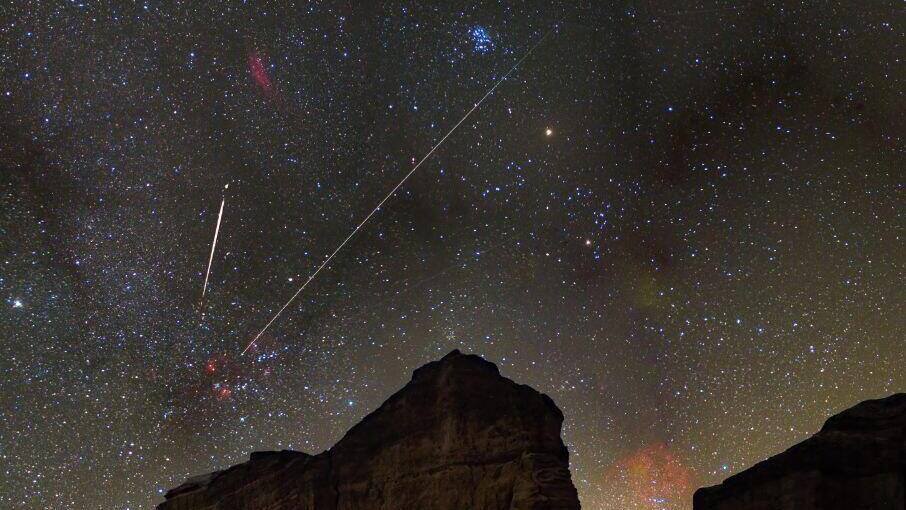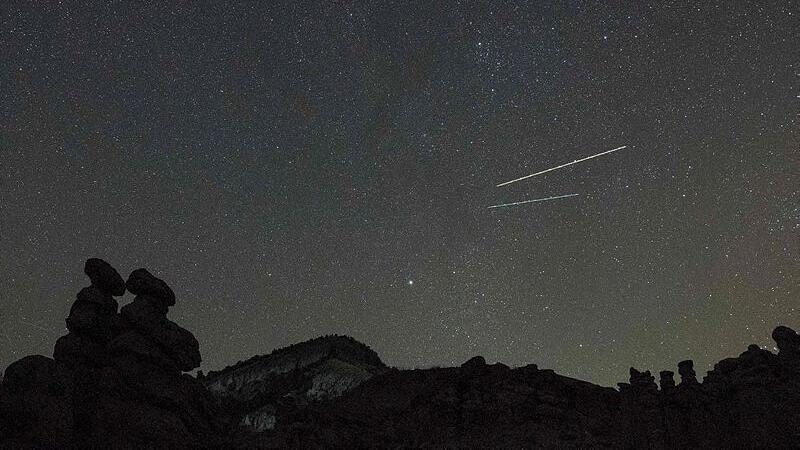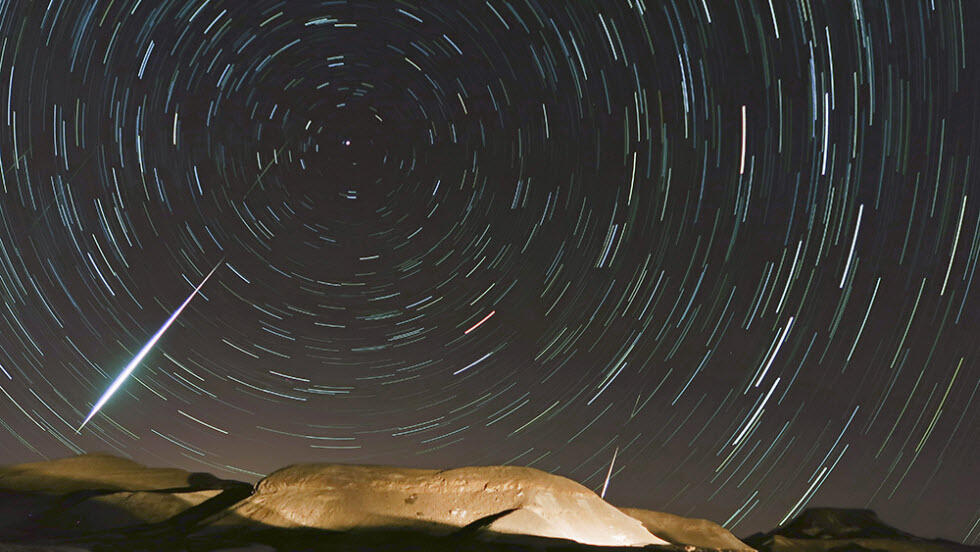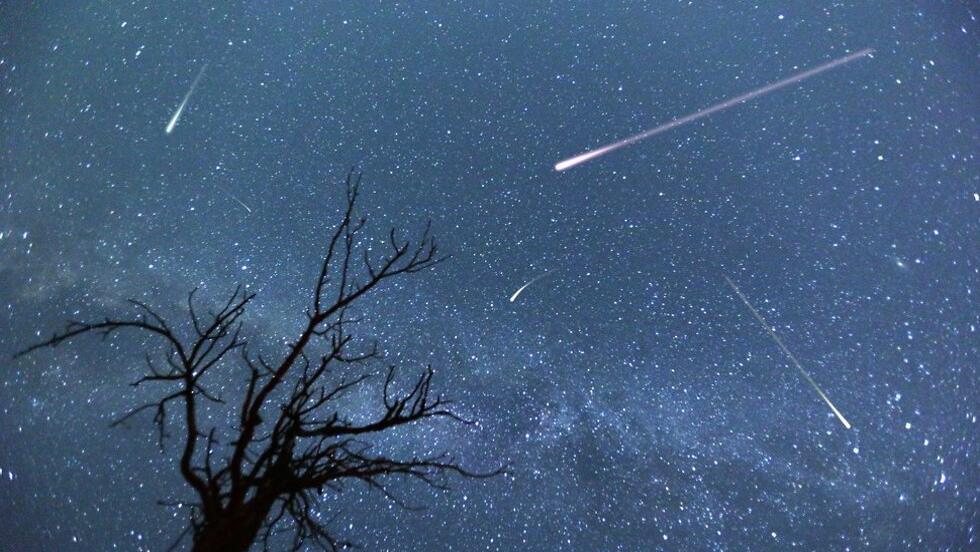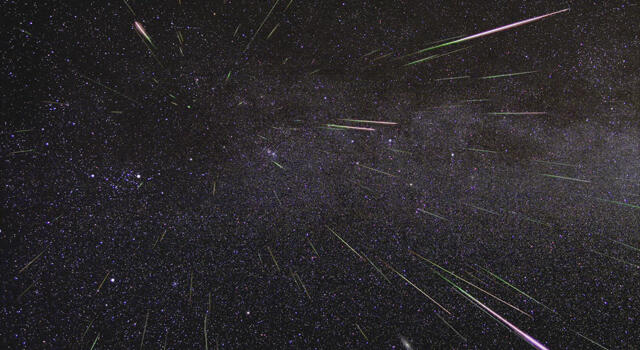Getting your Trinity Audio player ready...
Between Sunday and Tuesday, the most significant summer meteor shower – the Perseids – will reach its peak. This meteor shower is one of the most popular, thanks to its rich hourly rate of over 100 meteors at its apex, and because it occurs in the height of summer.
This year, the peak of the Perseids will occur on Monday at 4:00 p.m. Israel time, so the best times to view the shower will be from midnight on Sunday into Monday, as well as Monday night into Tuesday.
This year, the absence of the moon after midnight will enhance visibility. However, the Perseids are a wide-ranging shower that began in late July and will continue until the last week of August. So even those who head to dark skies this upcoming weekend will be treated to a show, though after the peak days, the larger, brighter moon will make fewer meteors visible. At the same time, another shower, the Delta Aquariids (originating from the Aquarius constellation), will add a few more meteors to the experience.
When and how to watch the meteor shower
For optimal viewing, find a dark location as far away from city lights as possible. In urban areas, only a few meteors might be visible, but the farther you venture from city lights, the better your chances of seeing many more meteors. Since the moon will set around midnight on the peak night, the best time to watch is after midnight. The radiant point, where the meteors appear to originate, will rise in the northeast around the evening and be high above the horizon by midnight. It's best to lie on your back and look toward this direction, though meteors can appear in any part of the sky. During the peak, expect to see several dozen meteors per hour. Because meteors streak across the sky rapidly and can be seen over a wide area, the best tool for watching them is a pair of eyes – binoculars or telescopes won't be useful.
What are meteors and meteor showers?
On any given night, many individual meteors can be seen, appearing from all directions with no apparent pattern. In contrast, meteor showers occur on specific nights each year when the number of visible meteors dramatically increases, all seeming to come from a single point in the sky called the radiant.
The word "meteor" comes from the Greek word meaning "something in the air." The phenomenon is popularly known as a "shooting star" because it looks like a star racing across the sky and appears to fall. Most visible meteors are no more than tiny specks of dust, each weighing less than a gram. Earth's gravity catches these particles and enters the upper atmosphere at speeds that can reach tens of kilometers per second. The Perseids, for example, travel at 59 kilometers per second.
The intense speed causes the dust particles to collide with gas molecules in the atmosphere, heating up and glowing brightly – the flash of light we see as a shooting star. Often, the meteor leaves a glowing trail that lingers in the sky for several seconds. In most cases, these particles burn up high above the Earth's surface. Only the largest particles survive the fiery descent and reach the ground; these are called meteorites. Very rarely, large meteorites – tens of meters in size – can cause significant damage, as happened in 1908 in Tunguska, Siberia, where an asteroid likely caused destruction over tens of kilometers. In February 2013, another asteroid, about 17 meters wide, exploded over Chelyabinsk, Siberia. However, there is no need to fear meteor showers – these dust particles, originating from tiny comets, are so small that they burn up long before reaching the ground.
The origins of meteor showers
The Leonid meteor shower of 1833 is considered one of the most spectacular astronomical events in recorded history, contributing significantly to our understanding of meteors' origins. On the night of November 12-13, 1833, the residents of North America witnessed a stunning display of thousands of meteors per hour, leading many to believe the world was ending. Accounts from that night describe skies ablaze with countless "falling stars" at every moment, with some reports estimating rates of up to 100,000 meteors per hour.
The meteor show only ceased at dawn. The event captivated astronomers, including Denison Olmsted of Yale University, who was the first to suggest that "falling stars" are particles entering Earth's atmosphere and burning up on their way down. However, full credit goes to Italian astronomer Giovanni Schiaparelli, best known for seeing "canals" on Mars (later shown to be an optical illusion). Schiaparelli pondered why meteor showers occur on the same dates each year. Investigating the Leonids' paths, he noticed a striking similarity to the orbit of Comet Tempel-Tuttle, discovered two years earlier.
Comets are bodies composed of ice and dust, ranging from a few kilometers to tens of kilometers in size, originating from the cold, outer reaches of the solar system. As a comet approaches the sun, its ice vaporizes, releasing gases and dust trapped within. These gases and dust continue to orbit the sun along the comet's path. When Earth's orbit crosses that of the comet once a year, it encounters the dust particles, resulting in a meteor shower.
Schiaparelli published his findings in December 1866 – 33 years after the last great Leonid shower and just days before the next major Leonid shower was due. Indeed, the Leonid shower of 1866 was particularly intense, just as Schiaparelli had predicted, based on the comet's orbit.
The Perseid meteor shower originates from the periodic Comet 109P/Swift-Tuttle, which takes 133 years to complete one orbit around the sun. It last passed its perihelion (the point closest to the sun) in 1992, leading to particularly rich showers from 1991 to 2000, with rates of several hundred meteors per hour. The comet will next pass close to Earth in 2126.
What is the radiant?
Due to the laws of perspective, meteors from a particular shower all appear to radiate from a single point in space, known as the radiant, much like railway tracks seem to converge at a single point on the horizon. Each meteor shower is named after the constellation where its radiant is located. The Perseids, for instance, are named because their radiant lies within the constellation Perseus, the Greek hero who carries Medusa's head. Perseus can be found in the northern sky, just south of the constellation Cassiopeia. The location of this constellation can easily be found using one of the many sky apps available for smartphones. In the case of the Perseids, the dust stream is relatively wide, so you can spot meteors belonging to the shower a few days before and after the peak.
The zenithal hourly rate and managing expectations
The quoted rate of meteors during a meteor shower's peak is a theoretical prediction, known as the Zenithal Hourly Rate (ZHR). This is the rate you would see if the radiant point were directly overhead at the peak time on an optimal night. When the radiant is low on the horizon and assuming meteors move equally in all directions, half will move below the horizon, meaning the actual observed rate will be lower than the predicted rate. And, as Murphy's Law would have it, the most beautiful meteors always seem to fly in the opposite direction from where you're looking! So, while the predicted rate might be 100 meteors per hour, in reality, you might see only a few dozen, even at the peak. Still, a few bright meteors streaking across the sky is a breathtaking sight.
Where to watch the meteor shower
Remember, you can watch the shower from anywhere – no need for binoculars or telescopes. However, city lights, even from a small town, will hinder your ability to see meteors. Various organizations, including the "Singing Stars Observatory," organize viewing events combined with star-guided tours in dark locations far from communities.
For those who can't get to a dedicated viewing site, you can still watch the shower from any dark location. Bright meteors can be visible even from within a city. As mentioned earlier, you don’t need telescopes or binoculars – just a blanket or a comfortable chair, preferably a few friends, dark skies, a good mood and some great music. You might even want to prepare some wishes. While there's no proven link between wishes and meteors, it never hurts to try. In our small country, it certainly doesn't.
Ten tips for a successful meteor watching experience:
- Choose a Dark Spot: Get as far away from city lights as possible. The darker the sky, the more meteors you'll see.
- Adjust Your Eyes to the Dark: Give your eyes 20-30 minutes to adapt to the darkness.
- Bring Comfort: Bring a comfortable chair or blanket. Watching meteors requires patience and extended sitting.
- Dress Warmly: Even on summer nights, temperatures can drop. Wear layers and bring an extra blanket.
- Avoid Artificial Light: Don't use cell phones or flashlights. If necessary, use red light, which is less disruptive to night vision.
- Check the Weather: Ensure the skies will be clear on the night you plan to watch.
- Know the Radiant's Direction: Be aware of where in the sky the meteors will originate but don't focus solely on that spot.
- Bring Binoculars or a Telescope: While not necessary for meteors, these can be used to explore other interesting celestial objects.
- Plan for a Long Night: The longer you stay, the more meteors you'll see. The peak often occurs in the hours before dawn.
- Bring friends: Meteor watching is a great experience to share. More eyes see more meteors and it also makes the experience more enjoyable.


